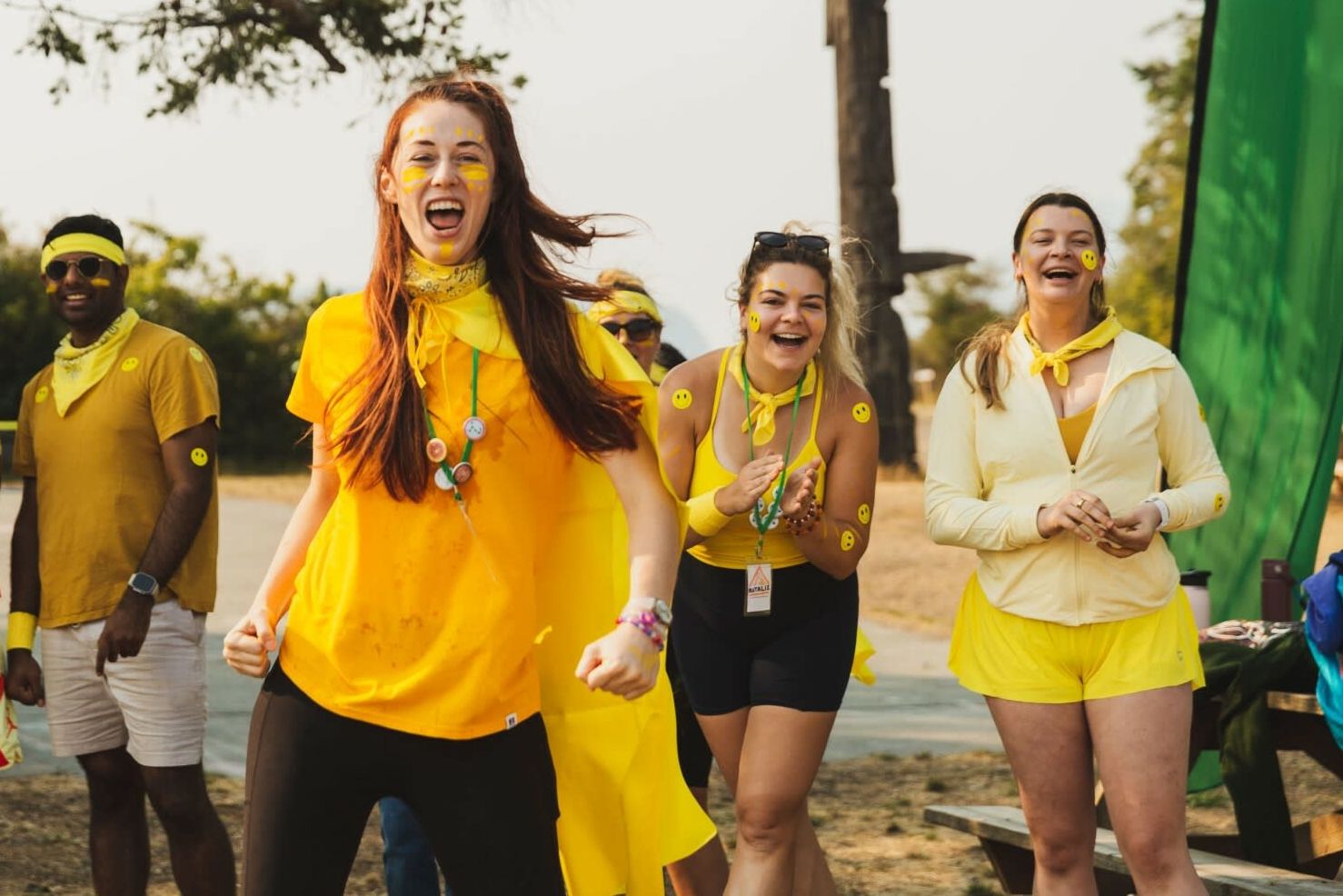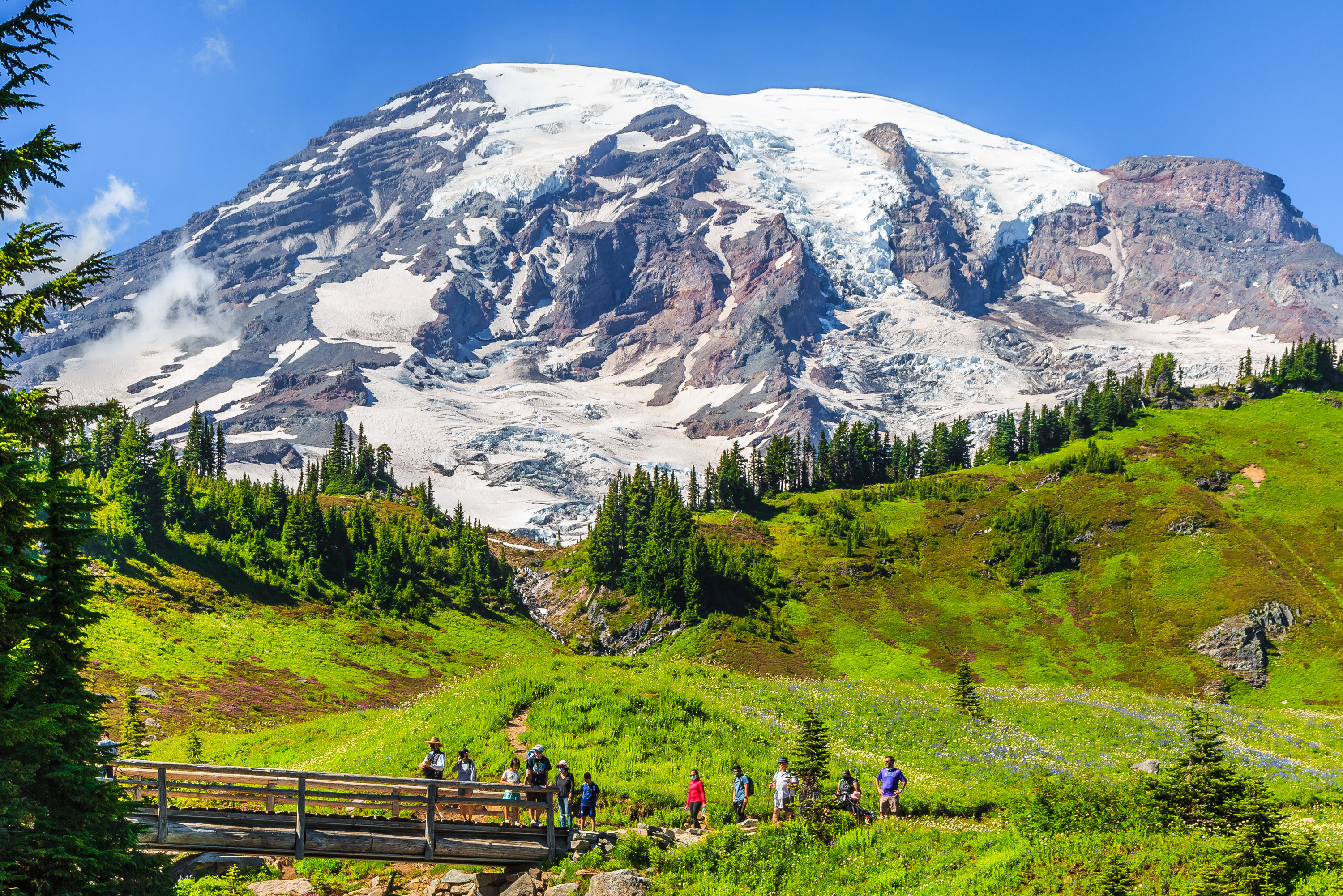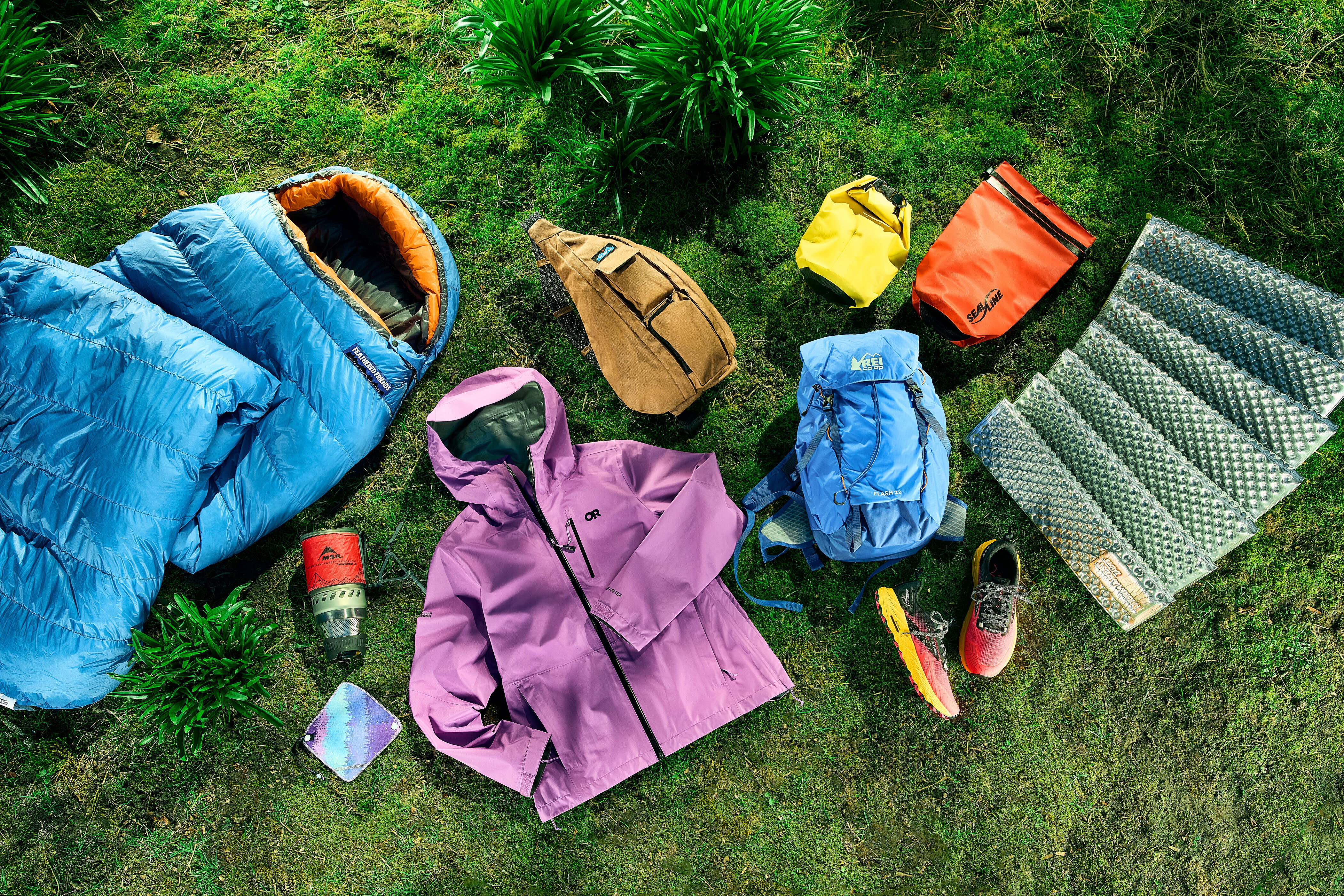
Why Are We So Scared of Bears?
A rustle outside the tent. A shadow in the woods. Anyone who plays outside has felt the sensation of something out there and has frozen for a moment. “Was that a bear?”
It’s natural to be scared of bears. They’re wild animals, 300 pounds or even 700 pounds large, deemed ferocious since they were killed for sport in the Roman Colosseum between gladiator matches. They’re fought in prestige films like The Revenant (and more ridiculous ones like Cocaine Bear), and hiking guidebooks describe how not to piss them off.
When a bear hurts a human, it can be too gruesome for even highbrow cinema; in his documentary Grizzly Man, Werner Herzog wouldn’t let his audience hear the recording of a fatal attack on bear aficionado Timothy Treadwell—he considered footage of himself listening to be brutal enough. The specter of an ursine assault lingers in the wings of human experience, all the more terrifying for being more of a suggestion than a reality.
But bears are mostly harmless, especially in Washington. The state’s black bears have injured humans only 20 times in the past half century. Lynn Rogers, a Minnesotan biologist who’s been dubbed the Jane Goodall of black bears, notes that the million or so of the animal in North America only kill about one person per year.
But that’s the Ursus americanus, the black bear (which can look cinnamon, chocolate, blonde, or even white). The brown bear, Ursus arctos, on the other hand, attacks more frequently, and the grizzly subset even sports the Latin name Ursus arctos horribilis. They’re not called horrible in an ironic way, like a big guy named Tiny; there were 183 attacks by brown bears logged in North America between 2000 and 2015, 24 of them fatal. A grizzly hasn’t been spotted within Washington’s North Cascades since 1996, but as of April 2024 there’s an official plan to bring them back to the state.
Interactions between the state’s human residents and black bears are mostly passing sightings, says Captain Mike Jewell, an enforcement officer with the Washington Department of Fish and Wildlife. The rare clash does occur, he says, but “bears are never really that big of an issue.”
Yet I still think about the time, years ago, when I polled the Seattle Met editorial staff on why they didn’t go camping, Seattle’s unofficial pastime. Was it the bugs, the dirt, the cold, the overwhelmingly expensive gear? The unexpected consensus: most said they were scared of encountering a bear.
John Chelminiak was fiddling with his headlamp outside his Lake Wenatchee vacation home in 2010 when he heard an exhale in the dark. The family had just arrived from Bellevue for a mid-September weekend, and the dogs needed a walk. Chelminiak identified the heavy breather even before the sound of the bear’s nails clicking on the paved roadway signaled a rush toward him.
Or maybe the sound was not just nails clicking; he recalls that weeks later, in a Seattle hospital room, wildlife enforcement told him that bears in attack mode might clack their teeth together. The dogs were no deterrent; one was pocket-size and named Peekaboo. They found their way back to the house in the long minutes that followed.
The bear launched into Chelminiak in the dark and knocked him to the ground. “I went from just a melancholy walk outside to, you know, sheer terror and full adrenaline flow,” he recalls. What came next was a wrestling match in a gravel driveway, the 5-foot-11-inch former mayor of Bellevue versus an animal he could sense more than see after losing his headlamp and glasses. Her teeth and claws tore at his head, and the last thing Chelminiak remembers was raising his knee to clock the bear in the jaw from below. It stunned her, he thinks. He calls it a lucky shot.
As hazy as his memory of the actual attack might be, Chelminiak is clear about a few things. For one, that he knows his experience is remarkably rare. He calls bears “incredible”—in a good way—and feels more sympathy than malice for the black bear that mauled him years ago. She was a relatively petite 155-pounder, not a grizzly. He knows he wouldn’t be alive had he been faced with the latter. “That’s like a high school defensive line being compared with the Kansas City Chiefs defensive line,” he says.
But even up against a small black bear, the damage was so extensive that he was airlifted to Harborview Medical Center, where he was admitted for 23 days. Doctors covered his left arm with skin grafts and repaired his scalp. Chelminiak lost his left eye.
How does such brutality square with a mild reputation? The event was clearly an outlier, though Captain Jewell notes that such attacks don’t come out of nowhere; the bear had been procuring food in trash cans and bird feeders in the rural neighborhood, priming it to think of the place as its own territory. Meaning the attack was defensive, not predatory. Wildlife enforcement quickly located and euthanized the emaciated bear that night.
Long after his wounds began to fade, Chelminiak felt the effects of PTSD. A cat running through the bushes of his suburban neighborhood “scared the bejesus” out of him, and on his first return to the Lake Wenatchee cabin three months later, he froze when he stepped out of the car to find bear scat on the same gravel driveway.
The next summer, Chelminiak joined friends on the Middle Fork of the Snoqualmie River for a casual weekend hike. Three miles up the trail, they spotted a bear with cubs. His buddies readily agreed to turn back, but near the trailhead they met a ranger heading into the woods. The ranger was enthusiastic to hear of their encounter: “He was like, ‘Oh, wow, you guys are so lucky to have that happen to you!’” Chelminiak says. Still shaken, he didn’t elaborate on the fact that luck goes both ways.
Lynn Rogers lives and breathes bears, and has since the moment one breathed on him. As a teenager he felt crowded by the tent on a summer camping trip, so he slept outside. In the middle of the night the sound of a bear tipping over a garbage can woke him; the animal then sniffed him from toes to face. “From everything I’d heard, I could not imagine that it would not try to eat me,” he recalls.
Born in 1939, as a child Rogers read Outdoor Life, packed with stories of ferocious bears. Now he looks back and realizes the tales were cast that way so any hunter, “whether it being a churchgoing father or a toothless boozer,” was therefore a hero. “They hired people to draw the most scary pictures imaginable,” he says. “They couldn’t really do that with real photographs.” He went on to study black bears extensively—he’s not only compared to Jane Goodall, he’s been endorsed by the famed chimpanzee researcher—and founded the North American Bear Center to dispel myths and educate humans on bear safety.
Because the crucial element to bear safety is preventing contact in the first place. Omnivorous black bears primarily subsist on berries, vegetation, and the still-tasty remains of other animals’ kills; if they get a taste of rich human food, well, the U-pick life looks a lot less appealing. Most interactions are in urban areas where unsecured trash turns the forest dwellers into pesky cul-de-sac scavengers, more oversize raccoons than ferocious hunters.
In their natural home, it’s still about deterrence. Hikers usually make enough noise to drive them off, and backpackers store edibles in bear cans or stationary metal bear boxes. REI sells bear bells and a bear horn. Hiking with a firearm for bear encounters is rare in Washington, but some outdoors folk carry mace-like bear spray (the most popular brand has the combative name Counter Assault).
Despite the evidence, we humans tend to default toward trepidation. Onetime superintendent of Banff National Park Kevin Van Tighem wrote extensively on the subject, concluding that fear of bears “seems almost to be a part of what it is to be human.” Bears seem to share a corner of the human psyche with sharks, wolves, and maybe lions: misunderstood big baddies.
Locally, they’re often grouped with cougars, an even more shy large mammal that can occasionally harm humans. Notably, however, Coast Salish tribes respect the animal, carving it in totem art and likening it to a wise elder with much to teach. And in popular culture, bears take as many cuddly forms as toothy ones: teddy bears, Smokey Bear. Bumbling Baloo, polite Paddington, the pure-of-heart Winnie-the-Pooh.
But our bear biases now face a new complication. In late 2023, two federal agencies—the National Park Service and US Fish & Wildlife Service—asked for public comment on a plan to release 25 grizzly bears into the North Cascades, hoping to replace a population that has died out, mostly from hunting. Washington's last known North Cascades grizzly was killed in 1967. A few dozen grizzlies would restore biodiversity, their being, the proposal notes, “part of the natural and cultural heritage of the North Cascades” and would bring back the area’s “wilderness character.” The draft plan garnered more than 12,000 responses through the official portal. The Environmental Impact Study notes that the few newcomers could clash with livestock or even backcountry hikers, but that tourism could also get a boost with the added possibility of spotting a grizzly. In April, the two federal agencies announced the decision: green light for the grizzlies.
The handful of new bears, some three to seven per year, will hardly compare with the 20,000 black bear locals. Past reintroduction proposals were met with pushback from ranchers and recreationists, though experts say the scarcity and remote terrain should make interactions rare. But it’s not an impossibility, says US Fish & Wildlife public affairs officer Andrew Lavalle; one of the thorniest issues to work out has been what to do if an individual grizzly does become a problem.
As prominent as they are, bears will probably never compete with, say, orcas or salmon for local icon status. They’re impressive and numerous, and, yes, a little bit scary. “The black bear is probably more afraid of you,” says Chelminiak, who has the dubious distinction of having experienced what almost never happens. “But to say that there’s nothing to fear, I think is also going a bit too far.”
Fear may keep some people from the outdoors, from camping and hiking and mountain biking. But for others that risk is part of sheer appeal of being outside. Sociobiologist E. O. Wilson particularly understood our complicated feelings. “We’re not just afraid of predators, we’re transfixed by them, prone to weave stories and chatter endlessly about them,” he wrote. “We love our monsters.”




